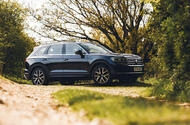Why Is Volkswagen Retiring the Touareg After More Than Two Decades?
If you’ve ever admired the Volkswagen Touareg for its blend of luxury and practicality, you’re not alone. Since its debut in 2002, the Touareg has stood as a symbol of Volkswagen’s ambition to break into the premium SUV market. But after 24 years, VW is preparing to retire this iconic model, with production set to end in 2026. So, what’s behind this big decision?
The answer comes down to shifting priorities and changing market dynamics. Volkswagen insiders have revealed that the company is refocusing its resources on models with broader appeal and stronger sales potential. The Touareg, while beloved by many, has always occupied a niche—positioned as VW’s most upmarket SUV, sharing its DNA with the original Porsche Cayenne. It was part of former chairman Ferdinand Piëch’s vision to elevate the brand, alongside luxury offerings like the Phaeton sedan.
But times have changed. The market for premium SUVs has become fiercely competitive, and Volkswagen is now betting on models that can attract a wider audience without the hefty price tag. Enter the Tayron, which is already on sale in several global markets and will soon take over as VW’s largest SUV in the UK. The Tayron offers a more versatile interior, a robust 2500kg towing capacity in its 2.0 TSI 4Motion version, and comes in both two- and three-row configurations. It’s positioned as a more accessible alternative, designed to meet the needs of families and adventurers alike.
What Does the End of the Touareg Mean for Volkswagen’s SUV Lineup?
Losing the Touareg isn’t just about saying goodbye to a single model—it signals a broader shift in Volkswagen’s strategy. The brand is moving away from its earlier push into the luxury segment and focusing on high-volume vehicles that can compete in today’s crowded SUV market.
With the Tayron stepping in, Volkswagen is aiming to deliver the space, capability, and comfort that drivers expect, but at a price point that’s easier to swallow. This move reflects a wider industry trend: automakers are doubling down on crossovers and SUVs that offer flexibility and value, rather than chasing prestige at the top end of the market.
It’s also worth noting that the Touareg isn’t the only model getting the axe. Volkswagen is planning to discontinue the ID 5, its coupe-styled electric SUV, by 2027. The ID 5 was intended to appeal to style-conscious buyers, especially in China, but it struggled to gain traction there and has been overshadowed by the more practical ID 4 in Europe. By streamlining its lineup, VW hopes to concentrate on models that resonate most with buyers.
Why Isn’t Volkswagen Launching a New Electric MPV?
You might be wondering if Volkswagen is planning to fill the gap left by the outgoing Touran MPV with a new electric people-mover. There were discussions about a compact, MEB-based electric MPV—sometimes referred to as a “mini Buzz”—but those plans have been put on hold.
Why? The answer is twofold. First, consumer demand is shifting heavily toward crossovers and SUVs, leaving traditional MPVs with a shrinking audience. Second, Volkswagen’s engineering resources are stretched thin, particularly at its Braunschweig R&D center in Germany. The team is prioritizing potentially game-changing models like the next-generation electric Golf, which is expected to play a major role in VW’s future lineup.
Interestingly, Skoda, Volkswagen’s sibling brand, is now considering a compact electric MPV as part of its own strategy. This could mean that while VW steps back from the segment, the broader Volkswagen Group might still have something in the works for families who want an electric alternative to the classic MPV.
How Do These Changes Reflect Broader Trends in the Automotive Industry?
Volkswagen’s recent moves aren’t happening in a vacuum. Across the industry, automakers are grappling with rapid changes in consumer preferences, regulatory pressures, and the shift toward electrification. According to a 2023 report from the European Automobile Manufacturers’ Association, SUVs now account for over 50% of new car sales in Europe—a dramatic rise from just a decade ago. Meanwhile, sales of traditional sedans and MPVs have steadily declined.
This pivot is also about efficiency. By focusing on fewer, higher-volume models, Volkswagen can streamline production, reduce costs, and invest more heavily in electric vehicles and next-generation technologies. It’s a strategy echoed by other major players, as the race to electrify and digitize the car market heats up.
What Should Volkswagen Fans Expect Next?
If you’re a longtime VW enthusiast, it’s natural to feel a pang of nostalgia as the Touareg bows out. But the brand’s future is anything but dull. Expect to see more versatile, family-friendly SUVs like the Tayron, as well as a continued push into electric vehicles—especially as the next-gen electric Golf comes closer to reality.
For those who crave the luxury and refinement that the Touareg represented, there’s always the option to look at the used market, where well-maintained examples are likely to become modern classics. And who knows? With the automotive world changing so quickly, Volkswagen may surprise us yet again with a new flagship down the road.
The Takeaway: Change Is the Only Constant
Volkswagen’s decision to retire the Touareg after 24 years is more than just the end of a model—it’s a reflection of how quickly the automotive landscape is evolving. By focusing on versatile, high-volume SUVs and investing in electric innovation, VW is positioning itself for the next chapter. For drivers, that means more choices, more technology, and a lineup that’s built for the way we live now. And while it’s always tough to say goodbye to an icon, the road ahead looks full of promise.

